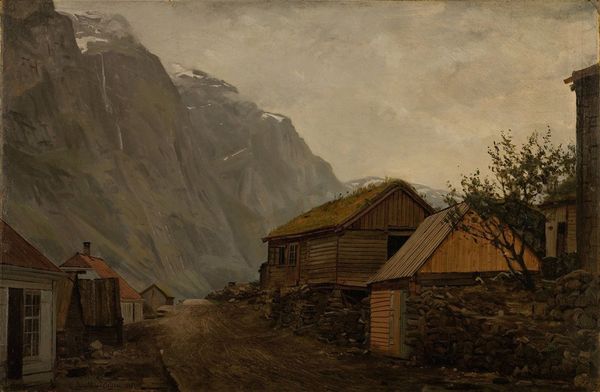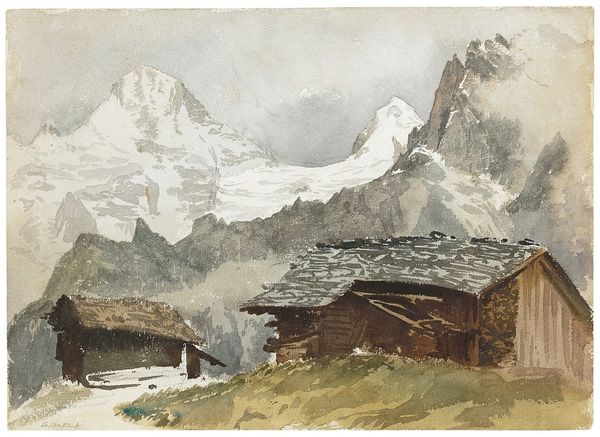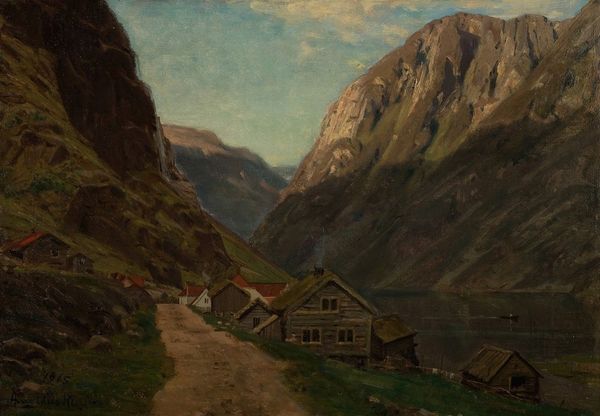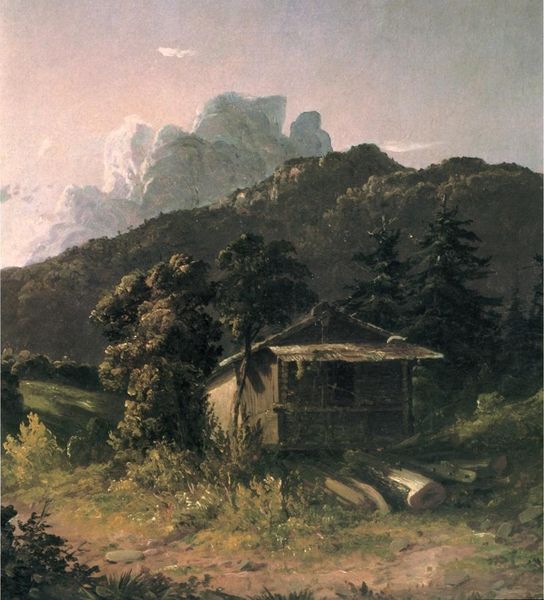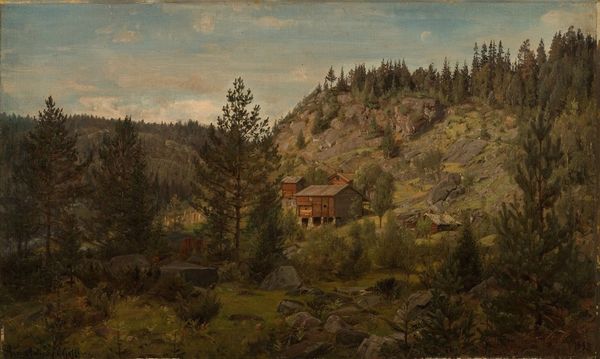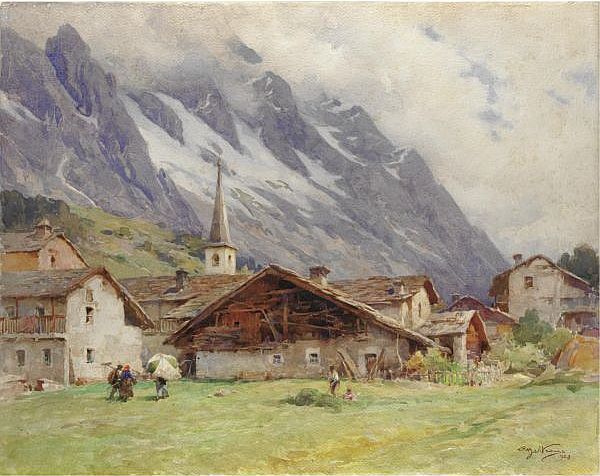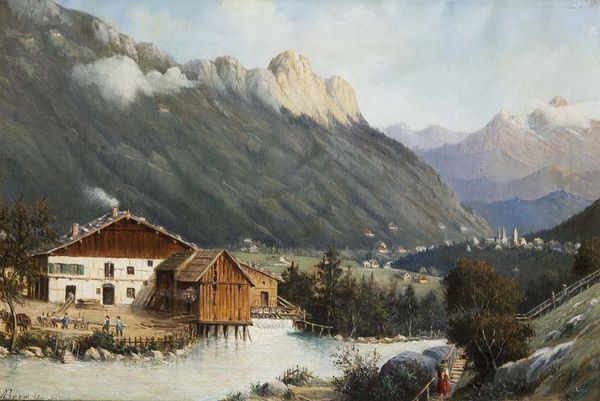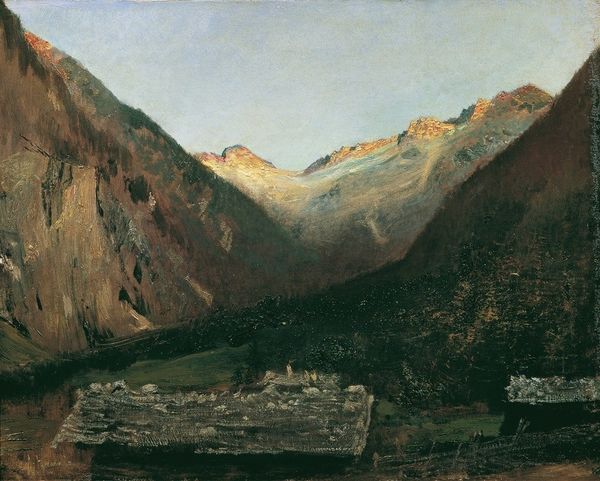
#
abstract painting
#
landscape
#
charcoal drawing
#
possibly oil pastel
#
charcoal art
#
oil painting
#
acrylic on canvas
#
underpainting
#
painting painterly
#
mixed medium
#
watercolor
Copyright: Public Domain: Artvee
Editor: We're looking at Gustave Courbet's "An Alpine Scene," painted in 1874. It appears to be an oil painting. It feels kind of moody to me. What do you see in this piece, especially considering the way Courbet structures the composition? Curator: Notice how the artist positions the dark, imposing mountains against the rustic structures in the foreground. The visual weight is distributed asymmetrically. The texture is remarkable. Consider Courbet's deliberate impasto technique, the thickness of the paint application. How does that texture affect your perception of the scene's realism? Editor: I see what you mean. It's almost like the mountains are looming over the village, but the thick paint gives it an almost dreamlike quality, too. Does the darker palette affect the painting’s emotional impact? Curator: Indeed. Observe the limited tonal range—primarily dark browns, greens, and whites. This reinforces the somber, almost melancholic atmosphere. It also guides the viewer's eye, doesn’t it? Does the formal reduction enhance or detract from its representational quality? Editor: I think it makes the textures and the way the light hits the mountains stand out even more. It becomes about the paint itself, not just the scene. I’d like to spend more time exploring the paint quality that the artist utilizes in representing landscapes. Curator: Precisely. And in acknowledging that shift, we’ve begun to unravel the intrinsic elements of Courbet’s visual language.
Comments
No comments
Be the first to comment and join the conversation on the ultimate creative platform.

